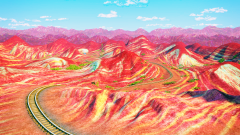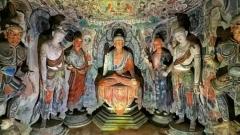Southern Xinjiang, the desert-bound half of China’s vast far west, is a region of living history. This is not the polished, imperial China of temples and tea pavilions. This is the China of jade caravans, Buddhist cave monasteries, blazing deserts, and bazaars teeming with humanity. Long a cultural crossroads between Central Asia and the Chinese interior, Southern Xinjiang formed the southern route of the ancient Silk Road, and even today, it whispers with the tales of traders, pilgrims, kings, and conquerors.
From the markets of Kashgar to the Buddhist murals of Kizil, and from the hypnotic sand dunes of the Taklamakan Desert to the snow-fed lakes of the Pamir Plateau, this guide introduces the essential regions and landmarks that make Southern Xinjiang one of China’s most otherworldly journeys.
Kashgar: The Beating Heart of the Silk Road
No city embodies the spirit of the Silk Road like Kashgar. Set against the edge of the Pamir Mountains, this fabled oasis city has been a bustling trade centre for over two millennia.
Start at the Id Kah Mosque, China’s largest Islamic house of worship. Its yellow-hued façade and green-domed minarets form the spiritual epicentre of Uyghur culture. Step beyond into Kashgar’s Old Town, where mudbrick houses, narrow alleyways, and wooden lattice balconies bring to life a way of living that has endured since Marco Polo’s time.
Kashgar’s famous Sunday Bazaar is less about what you buy and more about what you experience: herds of sheep being haggled over in one corner, bolts of bright silk unfurled in another, and barbers offering straight-razor shaves in open-air stalls. It’s dusty, noisy, and utterly captivating.
Don’t miss the Afaq Khoja Mausoleum, a stunning example of Islamic architecture and a sacred site to Uyghur Muslims. Its distinctive green-tiled dome and four minarets are iconic symbols of Kashgar’s spiritual identity.
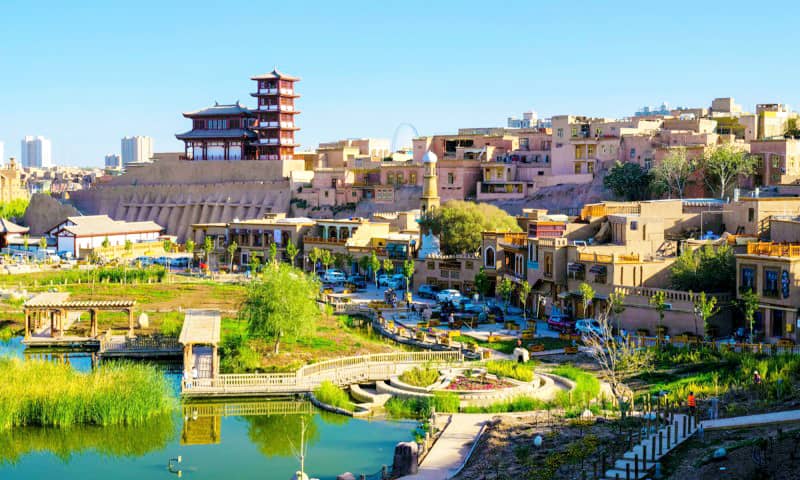
Kashgar
Taklamakan Desert: The Sea of Death
The name Taklamakan is ominous — often translated as “the place of no return.” This vast expanse of shifting sand dunes covers over 330,000 square kilometres, making it one of the largest sandy deserts in the world. But it’s not barren — it’s mythic.
Crossing the Taklamakan via Desert Highway No. 2 is a surreal experience. The road is flanked by endless dunes and kept alive by irrigation projects that defy nature. Along the way, you may glimpse camel herders, desert foxes, or even signs of ancient ruins slowly swallowed by the sand.
The desert is more than a wasteland; it’s a silent reminder of the Silk Road’s perilous middle path. The ruins of Dandan Oilik and Niya, ancient cities lost to sand, speak to both human ingenuity and the relentless passage of time.
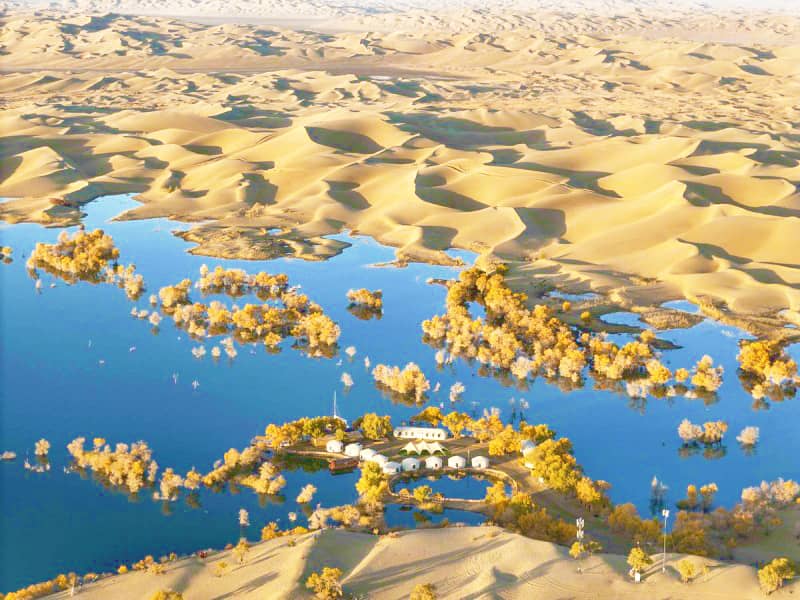
Taklamakan Desert
Kucha (Kuqa): Buddhist Echoes in Red Stone
Long before Islam arrived, the Kingdom of Kucha was one of Central Asia’s most important Buddhist centres. Nestled at the northern edge of the Taklamakan, modern-day Kuqa remains a gateway to that past.
The Kizil Caves are among China’s oldest Buddhist grottoes, dating back to the 3rd century CE. Though weathered, the frescoes inside are astonishing — depicting Jataka tales, bodhisattvas, and flying apsaras in vivid Indian-influenced style. Unlike the more famous Dunhuang caves, Kizil is quieter and far more remote, making a visit feel like an archaeological secret.
Just outside the city lies the Tianshan Grand Canyon — also called the Kuqa Grand Canyon — a stunning red sandstone gorge carved by wind and rain into cathedral-like spires. It’s one of China’s hidden geological treasures, often compared to Arizona’s Antelope Canyon, but far less visited.
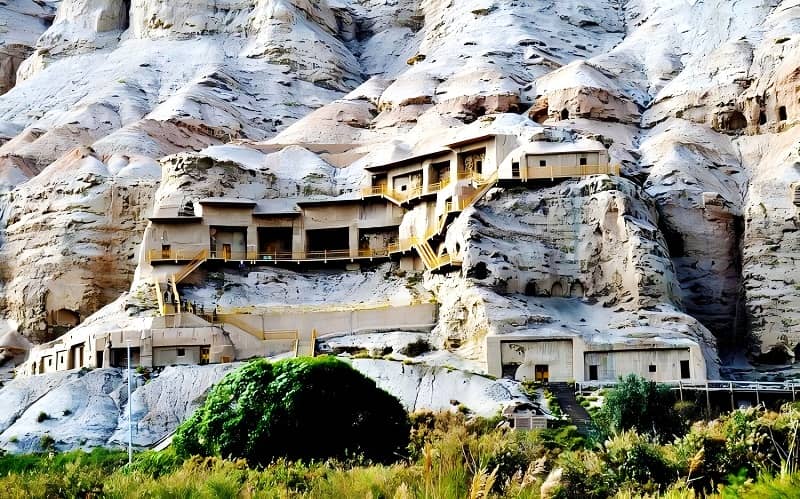
Kucha
Hotan: Oasis of Jade and Silk
Set along the southern rim of the Taklamakan, Hotan (Hetian) has been a crossroads of civilisation for millennia. It was once famed for its Hetian jade, and its riverbeds still yield the creamy white stone prized across China.
Hotan is also one of the few places in China where you can witness traditional silk weaving using methods passed down through generations. Workshops produce hand-woven Atlas silk, known for its bold patterns and bright hues.
Wander through the Hotan Bazaar, where Uyghur craftspeople sell copper teapots, dried fruits, carpets, and musical instruments. Be sure to visit the Night Market, a spicy, smoky affair where lamb kebabs, pilaf, and fried samsa are served hot under the stars.
Another attraction is the King of Walnuts, an ancient tree believed to be over a thousand years old — not just a botanical curiosity, but a cultural relic of a land where trees themselves are storytellers.
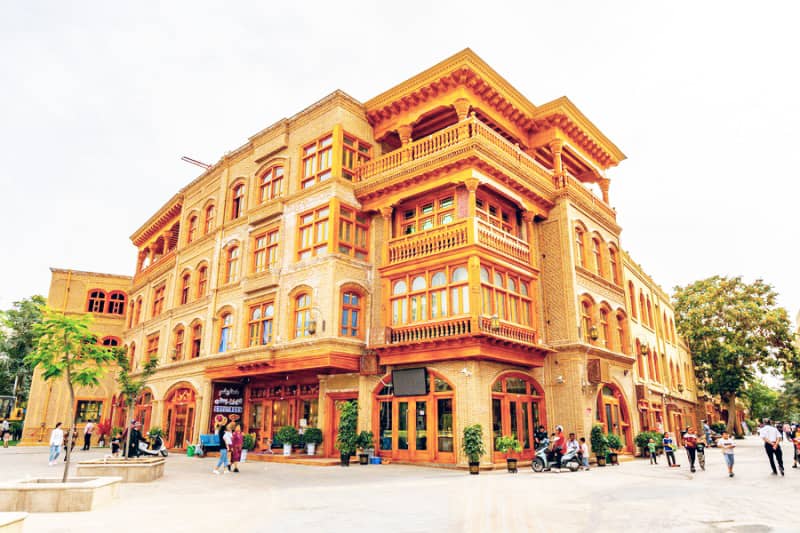
Hotan
The Thousand-Mile Grape Corridor and Zepu
Between Hotan and Kashgar lies the Thousand-Mile Grape Corridor, a fertile ribbon of land nurtured by centuries of oasis agriculture. Grapevines and fruit orchards bloom in improbable abundance, thanks to ancient irrigation systems known as karez.
Make a stop in Zepu (Shache), a quieter town with hidden charms. Here you can explore the Shache Royal Tombs, the resting places of local rulers from the Yarkand Khanate. Though not monumental, they offer insight into a once-powerful Central Asian kingdom that ruled much of the region before being absorbed into Qing China.

Thousand-Mile Grape Corridor
The Pamir Plateau: Where Heaven Touches Earth
To see where the sky meets the roof of the world, head south of Kashgar to the Pamir Mountains. This remote region is a world unto itself, home to Tajik herders, turquoise lakes, and jagged peaks that scrape the heavens.
Drive along the China-Pakistan Karakoram Highway, passing through Oytagh Red Mountain, a dramatic valley of crimson hills and grazing yaks. The route leads to Karakul Lake, a gem-like body of water resting at 3,600 metres above sea level and framed by Muztagh Ata (Father of Ice Mountains), a snow-capped peak revered by mountaineers and locals alike.
Here, you’ll encounter nomadic Kyrgyz camps, stone huts, and glacial winds that seem to carry whispers from the Himalayas. Whether you stay in a local yurt or simply hike around the lake, the Pamir region will leave you breathless — both literally and figuratively.
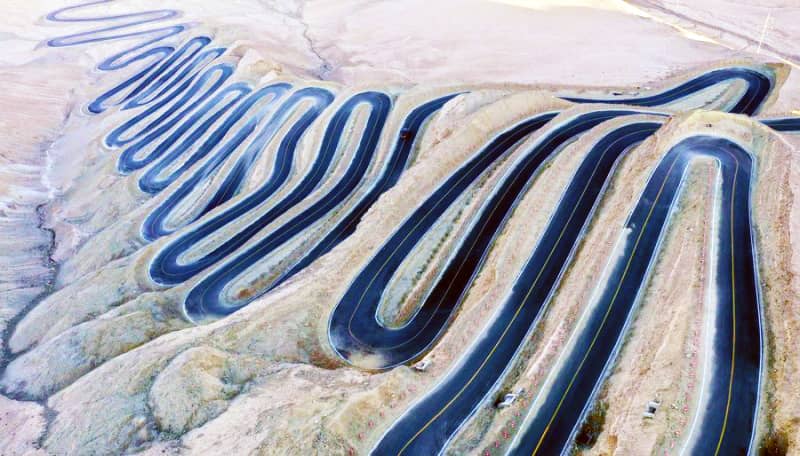
Panlong Ancient Road in Pamir Plateau
Essential Travel Tips
-
Best time to visit: May to October offers the best weather, with warm days and cool nights. Avoid winter unless you’re prepared for sub-zero desert and mountain temperatures.
-
Culture and etiquette: Xinjiang is home to diverse ethnic groups, particularly Uyghurs. Dress modestly, be respectful when photographing people, and always ask before entering a mosque or family home.
-
Transport: The region is vast. Consider booking a private car tour or joining a guided route. Public transport is limited in more remote areas.
-
Language: Mandarin Chinese is spoken officially, but in the south, Uyghur — a Turkic language — dominates daily life. A few words in either language go a long way.
Southern Xinjiang is a place of paradoxes — ancient yet immediate, desolate yet fertile, deeply spiritual yet grounded in everyday life. It doesn’t conform to the expectations many travellers bring to China. That’s precisely why it should be seen.
Whether you come for the markets or the mountains, the frescoes or the food, Southern Xinjiang will challenge and enchant you in equal measure. It’s not an easy trip — the roads are long, the comforts not always predictable — but for those with a traveller’s spirit and a historian’s heart, this land offers rewards unmatched anywhere else in the world.



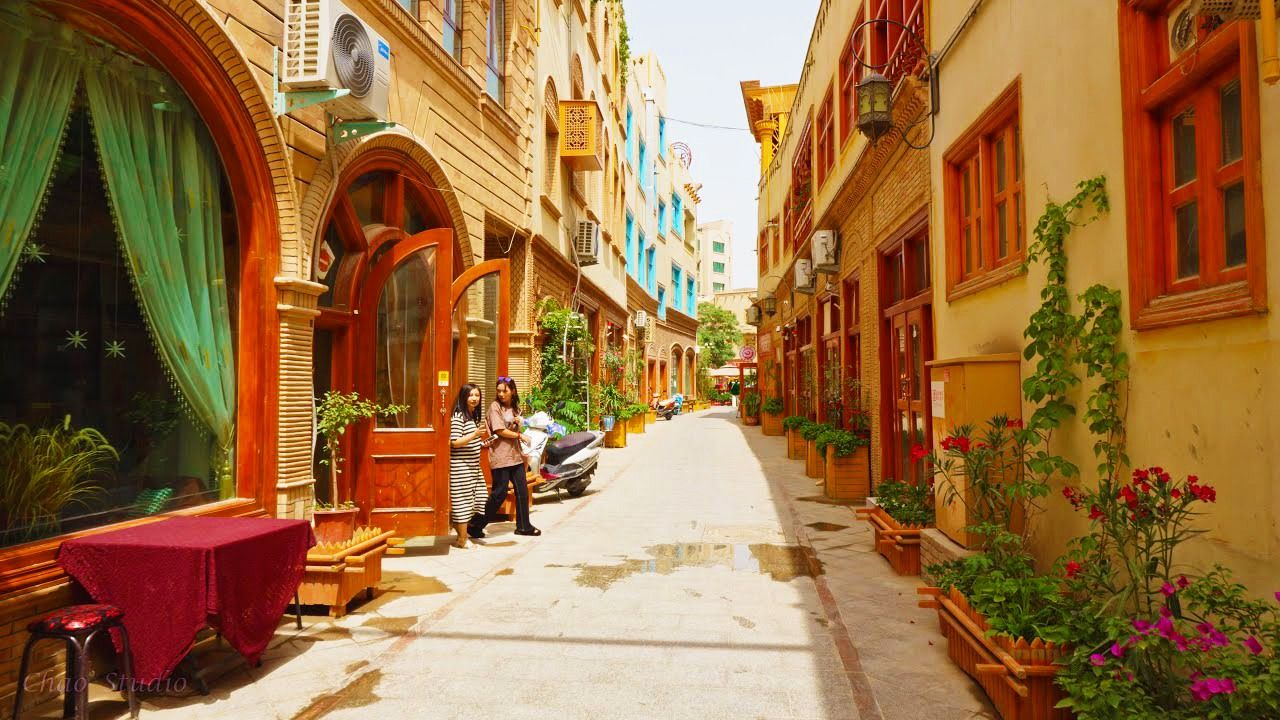
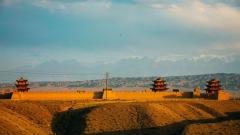

![11 Day Tour[Winter Limited] Drunken Beauty Xinjiang Ice and Snow Kanas Fairy Tale New Vision](https://www.chinadragontravel.com/wp-content/uploads/2025/12/25cff76cef9e445-240x135.jpg)

